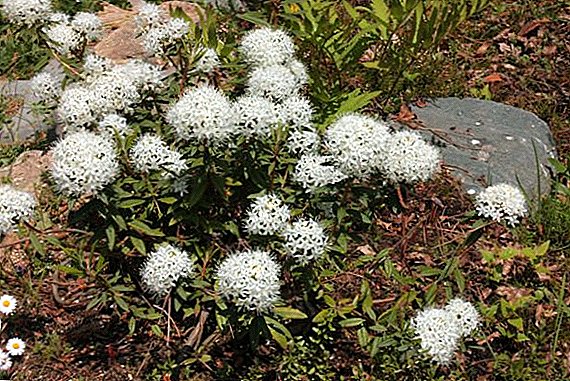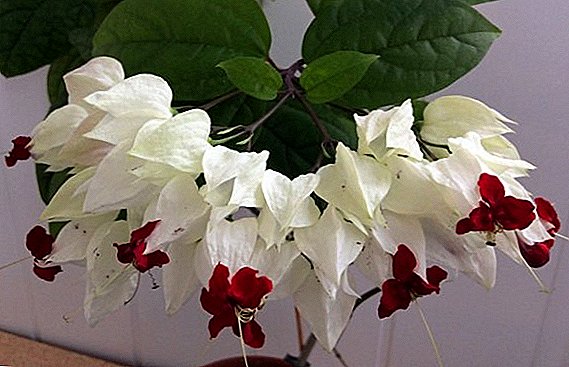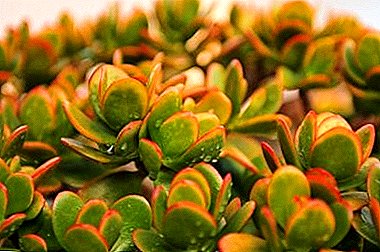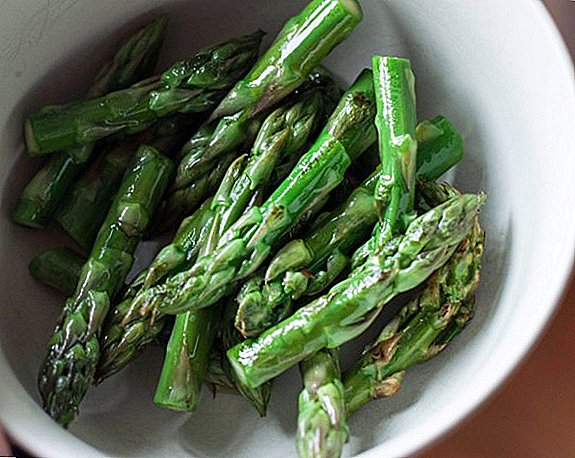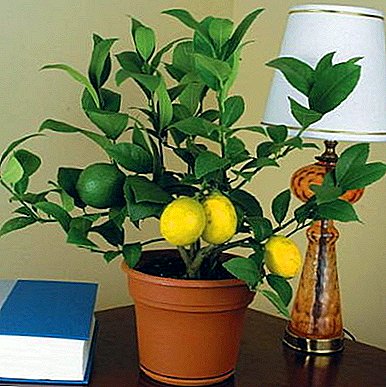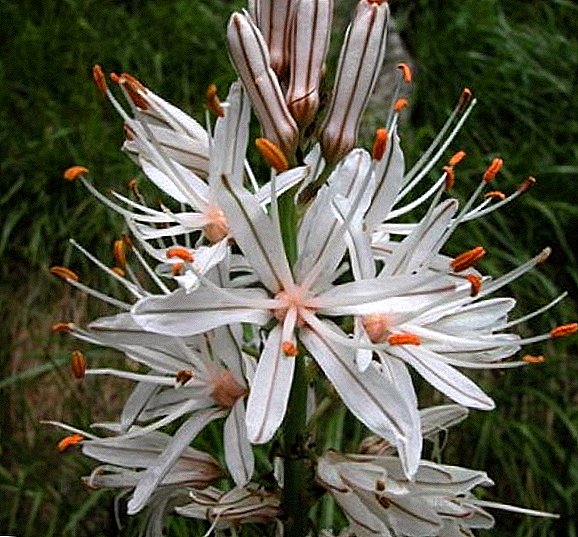 A worthy representative of the family of lily asphodel is known to many as the flower of death. Ancient Greek myths tell about it, it is described by the distinguished chronicler Homer. Asphodel can be a decoration of the garden and be eaten. We learn how to grow and care for the plant.
A worthy representative of the family of lily asphodel is known to many as the flower of death. Ancient Greek myths tell about it, it is described by the distinguished chronicler Homer. Asphodel can be a decoration of the garden and be eaten. We learn how to grow and care for the plant.
Description
Asphodel - ornamental, herbaceous plant. Perennial, but there are annual species. Perennial species are characterized by tuberous roots, and annual ones - by a dense tuft of rhizomes.  The height of the stems reaches more than a meter. Straight leaves are collected in a dense outlet near the roots. The length of the leaves is from 40 to 60 cm, the cross section is trihedral. The flowers are white, pink or yellow in beautiful brushes or panicles. The flower shape of the six sharp petals is very similar to the lily.
The height of the stems reaches more than a meter. Straight leaves are collected in a dense outlet near the roots. The length of the leaves is from 40 to 60 cm, the cross section is trihedral. The flowers are white, pink or yellow in beautiful brushes or panicles. The flower shape of the six sharp petals is very similar to the lily.
The plant is common in southern Europe, often found in Greece, Spain and France.
Did you know? Asphodel in the language of flowers is a symbol of immortality, regret and hope.
Legend
The Great Homer described asphodel in his legendary Odyssey. According to legend, the flower grows in the meadows in the realm of the dead, where the souls of dead people forever wander, whom they did not recognize as righteous after the trial, but the gods could not prove their unrighteousness, since then there is no place for them in heaven or hell.
The well-known ancient Greek myth tells how the god of the underworld of the dead, Hades, with the help of an asphodel, kidnapped Persephone, the goddess of fertility. The goddess saw a beautiful flower, wanted to tear it, and at that moment the earth opened. Hades appeared on a chariot drawn by black horses, grabbed Persephone, and the chariot with them disappeared under the ground.  In many Mediterranean countries, asphodel is a symbol of mourning; a flower is planted on graves.
In many Mediterranean countries, asphodel is a symbol of mourning; a flower is planted on graves.
Variety of species
There are about twenty types of asphodel.
The most famous species:
- white;
- fistrous;
- branchy;
- thin sheet
White it is considered the most beautiful - it is a perennial, the height of the stems reaches 1.2 m, beautiful white flowers with brownish veins on the petals are collected in dense inflorescences, leaves of a bluish shade.  Fistula is an annual with leafless, hollow stems of small height up to 40 cm and small flowers of pink color.
Fistula is an annual with leafless, hollow stems of small height up to 40 cm and small flowers of pink color.  Branchy - A tall perennial blooms with large white or yellowish flowers and has fruits similar to cherries.
Branchy - A tall perennial blooms with large white or yellowish flowers and has fruits similar to cherries.  Sheet - It is a low annual with narrow leaves and small flowers.
Sheet - It is a low annual with narrow leaves and small flowers. 
Cultivation and care
Asphodel adorns the gardens, parks and alleys, but can be used as an indoor ornamental plant.
Important! In room conditions after flowering and dying off of leaves it is recommended to take the pot to a cool place for three months.
It is good to use crushed stone as a drainage. The pot should be large, you can add compost to the soil.
It is necessary to grow a flower on a loose, not heavy, fertile soil in a sunny and sheltered place.
The light-loving plant requires moderate watering, as it accumulates moisture in the roots. Without sufficient lighting, it does not bloom, but it is desirable to shade direct sunlight.  For the winter, it is necessary to cut the stalks and leaves, and the plant requires shelter, as it is moderately cold-resistant (tolerates temperatures down to -15 ° C).
For the winter, it is necessary to cut the stalks and leaves, and the plant requires shelter, as it is moderately cold-resistant (tolerates temperatures down to -15 ° C).
During the period of growth it is recommended to make mineral fertilizer before flowering.
Familiarize yourself with the use of such mineral fertilizers as: Plantafol, Sudarushka, Azofoska, Kristalon, Ammophos, Kemira and Master.
Breeding
Reproduction occurs by two methods: seeds or division.
Seeds
Seeds need to be sown in the fall in a well-drained soil in a sunny or semi-dark place. To improve seed germination, cold stratification for 1.5 months is recommended. Shoots will appear next year in spring.
In spring, you can sow seeds in containers on a windowsill, in a cool place. At the bottom of the container it is necessary to put a layer of gravel for drainage, top it with sandy-loamy soil. Sow the seeds and cover with a small layer of soil on top, water well.
The container can be covered with glass or film. After the emergence of seedlings, it is necessary to plant the plants when they grow to 15 cm.  Tip: Asphodel seeds lose their germination over time, so it is advisable to sow them immediately after harvest.
Tip: Asphodel seeds lose their germination over time, so it is advisable to sow them immediately after harvest.
Division
The vegetative breeding method allows you to quickly get flowering plants and is more preferable compared to seed reproduction, you do not need to wait 6 years until the asphodel blooms.
Important! Asphodel blooms only in the sixth year of life, the flowering period is May-June.
The division of overgrown plants produced in spring or autumn. This procedure is best done at the end of August.
After the fragile rhizomes are divided into separate sockets, it is necessary to land them as soon as possible at a new place to a depth of 6-8 cm with a distance of about 40 cm between bushes. Water as needed.
Tip: Each outlet should have a well-developed root system with no signs of decay and mold and at least one growth bud should be present.
Application
Asphodel plays not only a decorative role in landscape design, decorating gardens, parks, is used as a houseplant, but is also used in food. Asphodel tubers are valuable.
Even the ancient Greeks used them for cooking and as a medicine. When poisoning took raw tubers.  In folk medicine, asphodel flowers are effective as an antidote to snake bites.
In folk medicine, asphodel flowers are effective as an antidote to snake bites.
You will be useful to get acquainted with the most useful medicinal plants.
Medicines for seizures and convulsions are made from the plant. Juice from the root is used to treat diseases of the eye and ear. Compresses from the decoction of plants help with fractures. The flowers have a mild laxative effect, and the decoction helps with jaundice.
In Spain, the roots of the plant are still used in cooking. Shredded tubers are made with special bread. Also add them to soups and main dishes.
The thickened roots contain large amounts of sugar and starch. Of them receive high-quality strong alcohol without harmful fusel oils. From the roots of preparing the components of drugs and glue.
Diseases and pests
The plant is unpretentious and sufficiently resistant to diseases and pests.  Excess moisture or poor drainage can cause major damage. As a result, the processes of decay in the rhizome begin, and the asphodel may die.
Excess moisture or poor drainage can cause major damage. As a result, the processes of decay in the rhizome begin, and the asphodel may die.
The main pests are:
- aphid;
- slug;
- snails.
From pests will help spraying with special solutions, there are many effective drugs. Against aphids, you can use the "Commander", "Aktar", "Corado."
Get rid of the snails and slugs will help drugs "Thunderstorm", "Ulitsid", "Patrol".
Did you know? Asphodel roots contain more sugar than sugarcane.
So, asphodel is an unpretentious plant and, despite the fact that it comes from southern countries, it can be grown in colder climates. Does not require special care and will be a wonderful decoration of the house or garden. The main disadvantage is the short flowering period.



